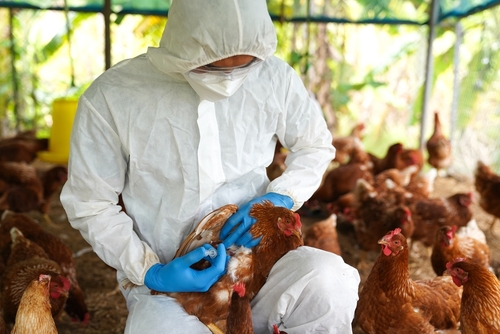
In an unprecedented development, the H5N1 avian flu has been detected in a pig in Oregon, sparking concerns over interspecies transmission. Such transmissions are rare. Investigations into the incident are ongoing.
H5N1 Detected in Pig: A U.S. First
H5N1 bird flu has been reported in a pig in Crook County, Oregon, marking a significant first in the United States. The virus was identified on a backyard farm, where a mix of domestic animals, including poultry and pigs, share resources. The detection has prompted a serious response from both state and federal health officials.
This incident highlights the risks of transmission between species, particularly as pigs can act as a ‘mixing vessel’ for new virus strains. Fortunately, the pigs appeared healthy and were only tested due to proximity to infected birds. Despite initial concerns, the farm does not pose a threat to the commercial pork industry.
H5N1 bird flu virus discovered in pigs https://t.co/jE8AH3OEJu
— The Hill (@thehill) October 31, 2024
Quarantine and Investigation Measures
Officials promptly implemented quarantine protocols on the farm as part of disease control efforts. Seventy birds were euthanized as a precautionary measure, with the area under strict observation.
The ongoing investigation includes comprehensive necropsies to determine if the virus has spread beyond its initial host and to inspect the pig’s lungs for signs of infection.
In the weeks following detection, initial genetic sequencing has shown no signs of increased transmissibility to humans. The concerning aspect lies in the detection of the virus in pigs, a species previously not affected by H5N1. There remains uncertainty if the detection was actual infection or due to nasal contamination.
A pig in Oregon has tested positive for the H5N1 bird flu virus, the Department of Agriculture says.
It's the first time the virus has been detected in swine in the U.S. https://t.co/0J2S9xPHfF
— NBC News (@NBCNews) October 30, 2024
Ongoing Monitoring and Future Precautions
Despite this occurrence, H5N1 has not shown significant ability to spread between pigs, and the virus’s presence in pigs remains speculative rather than definitive. Quarantine measures and scrutiny from health authorities aim to provide comprehensive insights and prevent potential outbreaks. Vigilance remains crucial as experts assess the long-term risks associated with interspecies transmission.
As investigations unfold, public health communities continue to monitor developments closely to ensure that risks are managed effectively. The extraordinary nature of these findings underscores the importance of preparedness and a robust response to potential zoonotic threats.











